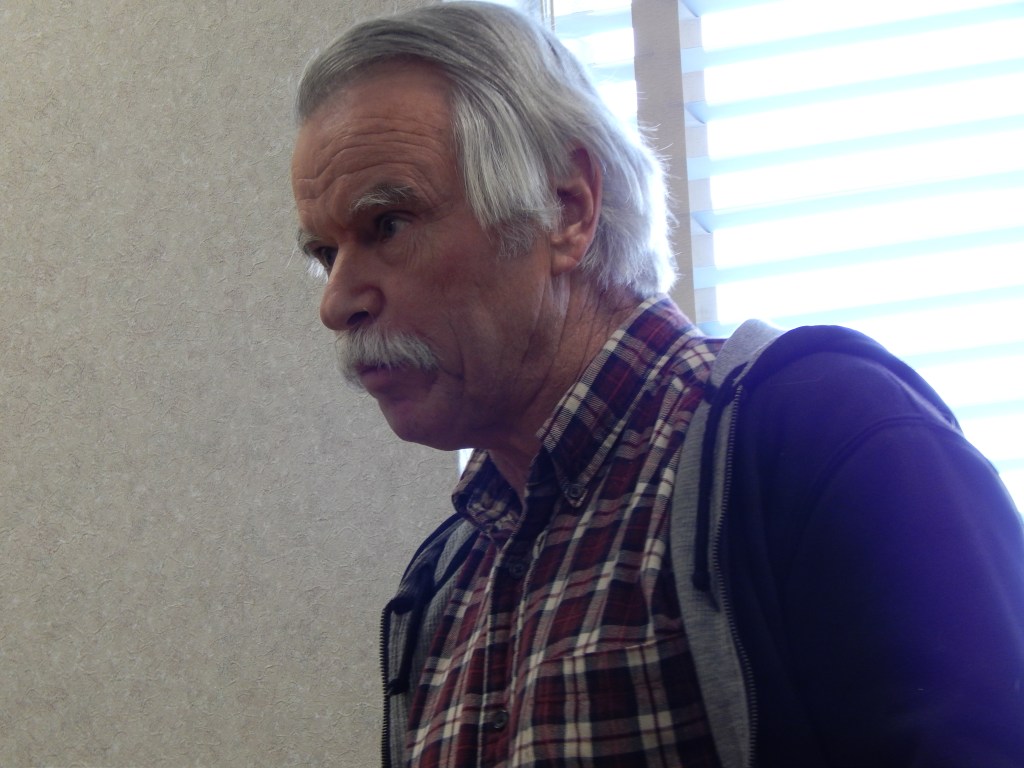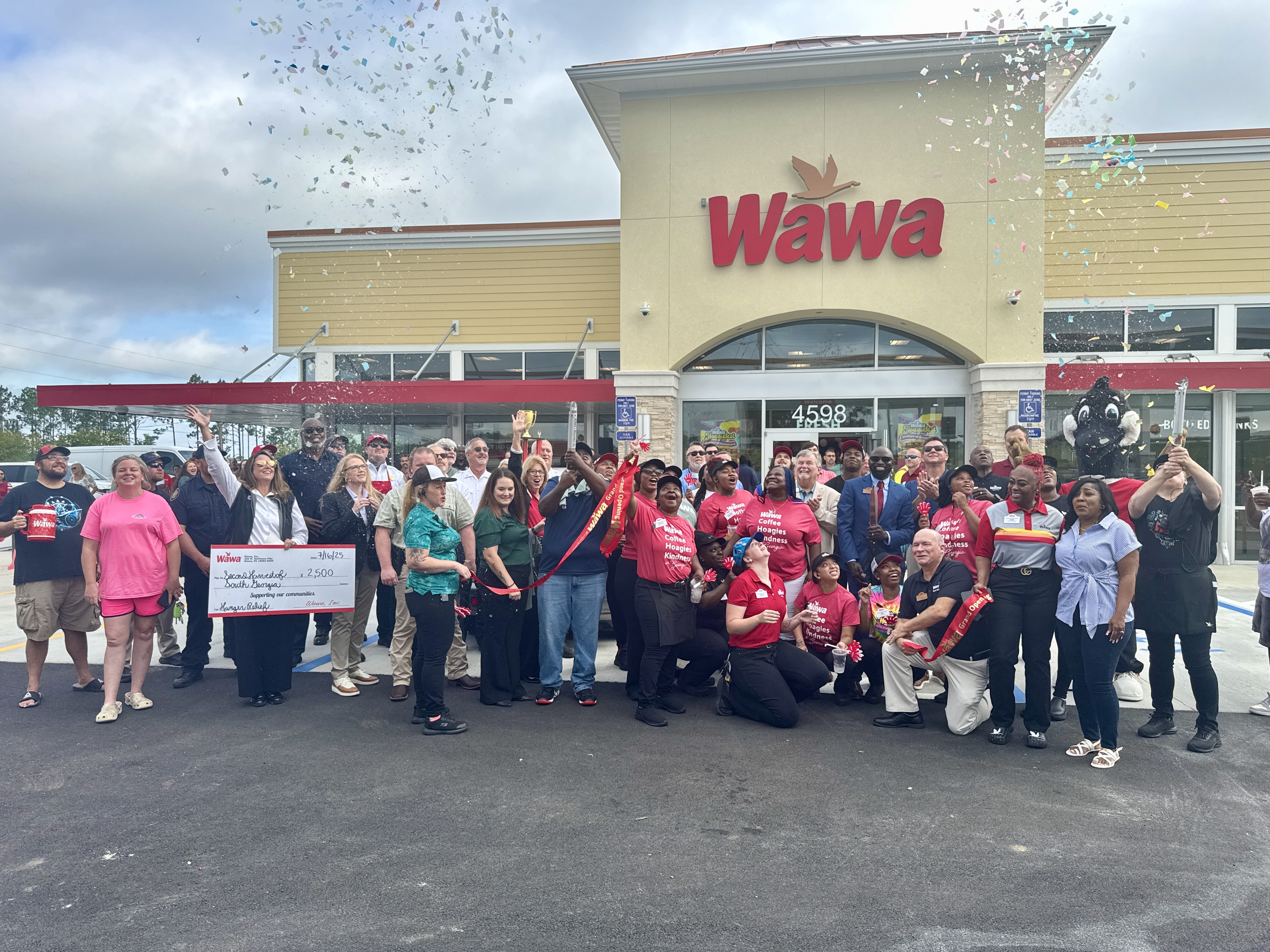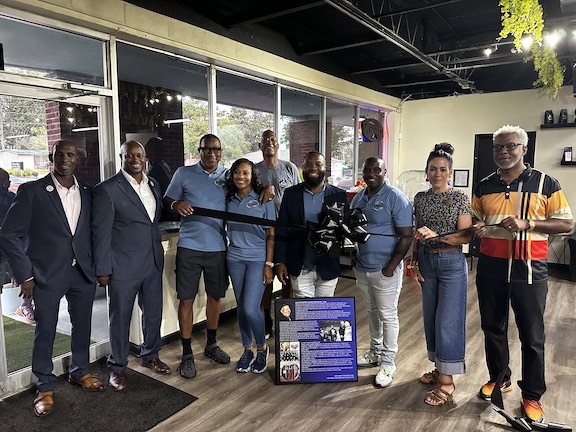Hamilton: Project Bark on hold
Published 8:10 am Friday, January 16, 2015

- Resident Steven Suty voices concerns about Project Bark.
County awaits 3 major items
Trending
Resident voices concerns
Project Bark was discussed at two recent county commission meetings (Dec. and Jan.) and to date, it is still unknown as to whether the project will materialize or not.
It was noted that a deed was drawn up by County Attorney John McCormick for the PotashCorp land the county is purchasing for the proposed Project Bark project, but McCormick said he didn’t know if PotashCorp has had time to review it yet. County Coordinator Louie Goodin said there were three things he was waiting for from Project Bark; a final site plan, a construction schedule (all part of the economic development agreement), and a definitive answer from them as to whether or not they are coming to Hamilton County.
Goodin said, “I supplied them with information on power line setbacks, so they are still working on it, but we can’t progress any further until they give us their site plan and construction schedule.”
Goodin said he had hoped to present the board with the development agreement at their Jan. 6 BOCC meeting, but with the missing items, it is not ready yet.
Meanwhile, the board discussed whether or not they needed to call a meeting to review the terms of the development agreement and make certain it was worded the way they wanted it, in order to protect the county. Counsel advised them they should wait until they hear back from Project Bark with the three necessary items that Goodin mentioned.
Trending
Resident George Roberson said he wasn’t too keen on the idea of Project Bark in the beginning, “but I really like what you’re doing tonight,” he said in December. “You have to understand that we have to live with this agreement once we sign it. As far as a taxpayer, I want y’all to go over it (the agreement) with a fine-toothed comb and get it right. Y’all are doing a good job now. You’re talking about it and discussing it, and it’s closing up a lot more than it was.”
Jan. 6 BOCC meeting
Goodin said he spoke to Diane Scholz from the Institute of Government the prior week and she said there was some concern from Project Bark about utility and rail rates. Goodin said this was not something the county could do anything about on a local level. He said he briefly spoke to Baynard Ward from Suwannee Valley Electric Cooperative (SVEC) about the matter, but that it was time for the folks from Project Bark to come to Hamilton County again to discuss their concerns with the utility and rail people directly.
Goodin noted, “They’re very satisfied with Hamilton County and they wish to go forward here in Hamilton County, but there is some questions about those two items they need to clear up.”
Ward was in the audience and said SVEC has had some e-mail correspondence with Project Bark over the past three to four months.
“The information at this point is pretty general,” said Ward. “We do have some things that I can’t go into detail on right now, but we do have some things that we can discuss with them further. We are at a point where we are waiting on them to contact us.”
Ward agreed that it would be beneficial for Project Bark to come to Hamilton County and meet with all the entities who will be involved in the project, especially the railroad and SVEC.
“It’s hard to discuss some of this stuff via e-mail,” Ward said.
Commissioner Randy Ogburn asked Ward if SVEC, being a co-op, can be competitive on rates compared to some of the larger power companies, such as Duke Energy.
“Yes, we feel as though we can be competitive,” said Ward.
Ward explained that SVEC has territorial agreements with Duke Energy and that SVEC serves the area of the project site.
“Duke provides the transmission service in that area, which we would tap into,” Ward said. “There are delineated areas in Hamilton County that Duke serves and we serve.”
Ward said, just like Hamilton County, SVEC is waiting on and needs a site plan from Project Bark.
“A lot of the capital costs that they’re going to have to pay for electric service are involved in the site layout,” Ward explained. “A lot of what they need is underground.”
A geographical layout of the site, Ward said, is needed in order to design the electric service that Project Bark will require.
“This is news to the board,” said Smith. “We, as a board, don’t have any say-so over the rates set forth by SVEC, Duke, FPL or the railroad. Unfortunately, this is something that is not in our hands.”
Goodin noted that Scholz has been in intense conversations with Norfolk Southern Railroad. Smith asked Goodin if it was customary for a railroad company to negotiate prices with rail clients and Goodin said he didn’t know.
Commissioner Buster Oxendine said, “There is negotiations there. They do it everyday.”
Ogburn said, “My fear is that we allow something like this to cause the project to fall through.”
Goodin agreed and said, “It’s time for them to bring their crew over here and stop talking over the wires and over e-mails. It’s time to have face-to-face.”
Ward said Project Bark asked SVEC to go to them (in Portugal) for a meeting.
“Our opinion is that all the entities that they need to meet with are here, and we feel that if they’re wanting to locate here, they would benefit more coming here than us going over there,” said Ward.
Ward explained that SVEC has responded quickly to any requests from Project Bark because they understand the urgency of the project getting started.
“They’re not waiting on information from us,” Ward said. “I can tell you that.”
Adjacent landowners
Resident Steven Suty was in the audience and spoke on behalf of some of the residents who live across the street from the proposed Project Bark site. Suty said he was concerned that a rural, agricultural area is being converted into an industrial area “at the snap of a finger.”
“We were just kind of taken aback by it initially,” said Suty. “The fact that it is a rural, residential agricultural area, and the fact that you’re considering putting an industrial plant right across the street, that’s my initial concern.”
Smith explained there will be a time in the future for public comment once the property is rezoned.
“It would be held during a public hearing,” said Smith. “That’s all the board can say at this point in time because nothing has happened at this point. It’s still amongst a discussion.”
“It seems it is above just the discussion stage, if you’re purchasing and buying property already, if I’m hearing this right,” said Suty.
“That’s correct, that is the intent for us to move…” Smith began, but Suty interrupted him.
“I don’t think you’re going to want to build a playground down there or anything, are you?” Suty asked. “I’m just wanting clarification, if I’m right and that is the site.”
“That’s right and that is our intent to put jobs in the county,” Smith replied.
Suty said he is all for bringing in more jobs, but that there are other industrial sites in the county, so why choose this particular site?
Ogburn explained that they had to find a site that was suitable for the project that included rail, water and sewer access and that he didn’t think the county’s other industrial sites fit the bill.
Suty said the board should talk to PCS about the reasonable rail pricing they have not been able to get, which, he said, explains why there are so many of their trucks on the road now.
“It’s because they couldn’t get an agreement and couldn’t be competitive with trucking for hauling the sulphur – when they were hauling sulphur – between the two facilities,” Suty said. “They may not be too accommodating.”
Suty asked the commissioners to think back a few years to when an ethanol project was proposed for the county and the fury it brought forth from White Springs residents who didn’t want to see a truck route through their town.
“We’re about looking at the same thing again here,” Suty said. “This is almost a deja vu type incident.”
Suty said if they do get rail service, there will be about a minimum of 50-60 trucks per day on the local roads.
“If they don’t get rail, you can probably double or triple that easily,” said Suty.
Ogburn interjected, “They’ve got to have rail. If they don’t get rail, the project won’t come.”
“I’m just saying, if they don’t get rail service, that’s what you’re looking at and virtually all of the traffic will be going through White Springs,” Suty clarified.
Another major concern, Suty said, is the potential for more truck-related accidents on the roads.
“I hate to see Hwy. 41 turn into a major truck route,” he told the board.
Suty said his neighbors are concerned about insects, specifically beetles.
“Just like it used to be when we had a bunch of small lumbering yards,” he said. “You can count on a bunch of beetle problems in the neighborhood. Every time the tree trimmers come by, I can tell I’m losing trees around the house, just because they’re spreading the disease going up and down the road.”
“I think we’re putting the cart before the horse,” Smith said.
“I do, too,” Suty said. “That’s exactly why I’m here. You are putting the cart before the horse. We’re buying property for something that we don’t even have zoned industrial.”
Smith explained that the PCS property they are purchasing is partially reserved for Project Bark, should they decide to come to Hamilton County. If they don’t, then the county will have the property to offer to another business.





